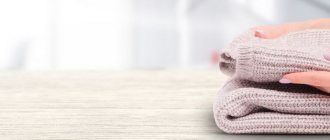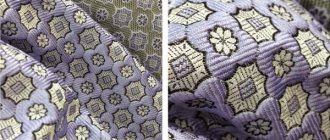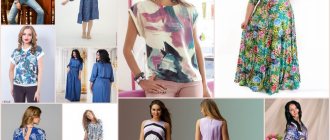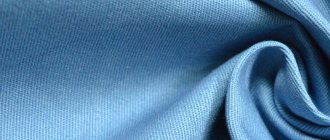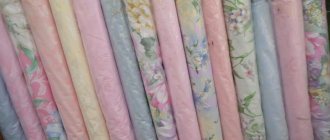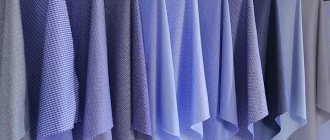Our quality of life standards are becoming higher. We try to surround ourselves with good-quality, beautiful, safe things and objects, and we take a balanced approach to the purchases we make. We select products carefully, excluding spontaneity of purchase. And this applies not only to furniture, household appliances, and electronics. Even buying a new beautiful towel if you choose illiterately can turn into an annoying disappointment and a waste of money. Let's try to summarize everything you need to remember and consider when choosing towels.
Types of towels by purpose
When we go to the store to buy towels or order them online, we know exactly how we will use them, so we choose products of the appropriate type. According to their purpose, all towels are divided into:
- Bath products, which should be gentle, soft and maximally hygroscopic, capable of instantly absorbing moisture remaining on the skin after washing. Towels of this type are usually large in size and have a pile structure.
- Kitchen - we are used to wiping our hands, wiping dishes, work surfaces during and after cooking. Due to their specific use (frequent contamination with fats, juice of fruits and berries, etc.), such towels are subject to aggressive types of washing, as well as ironing, so durable fabrics are chosen for them, mainly lint-free, linen or cotton waffle.
- For the face - after washing, wipe it with a soft towel that will not leave micro-scratches on the skin, for example, bamboo, which also has a bactericidal effect.
- For arms and legs - for these small towels, the main selection criterion is excellent hygroscopicity.
- Children's - a special category intended for babies and older children; children's towels should be the softest. Usually these are double-sided colorful terry products. The bath option often has a hood.
- Beach ones, which, in addition to their intended purpose, are also used as a sunbathing mat. They should be large in size, have increased resistance to abrasion, absorb water well, and provide a pleasant tactile sensation.
- Massage - with a more rigid structure, regulated by the composition and type of fiber torsion.
- Ritual - wedding, baptism, Easter, and also used at funerals. As a rule, they are sewn from linen, decorated with themed embroidery or printing.
Terry towel CLEANELLY Anello 70x140cm white, art.PTO-703-585
Comparison of terry robes
At first glance, what could be simpler than a terry robe? And upon closer examination, we find robes with embroidery starting from 2500 rubles. up to 14000 rub. for 1 piece.
Let's start from the most expensive ones. These are robes made of 100% cotton or with a composition of 60% bamboo and 40% cotton with a thread of the 3rd or 4th twist or cut to look like velor , due to which the robe becomes very dense and fluffy. The main thing that these robes are valued for is that they remain light despite their high density. There are only a few companies on the market offering such robes. The colors on these robes are rich. The palette is small, about 4-5 classic options. The production of dressing gowns varies from Europe to Turkey. The raw materials are mainly Turkish. The price of such robes starts from 6000 rubles. Next come robes with a density of 400 - 450 g/m2 ; these are robes made from Turkish raw materials; only a few factories make such terry. It is pleasant to the touch and does not fall off. Because fabric manufacturing goes through several stages. The terry on such robes is quite even and pleasing to the eye. The thread on them is 3rd twist. It is not so easy to put a “hook” on such a robe when used in everyday life. The color palette is much wider; you can find about 10 different colors. Manufacturers change their color palette from year to year. It happens that today you cannot find the red color that was a year ago. These changes do not apply to classic colors, which do not change from year to year. Please note that this robe may become stiffer after washing. Adding fabric softener helps. The average price for such a robe is 4000 - 5000 rubles. On our website, such robes are presented in the “Classics” category. Terry robes with a density of 380-420 g/m2 close the world range . These robes are quite thin and light. Ideal for women's shoulders. The thread used in them is single twist, maximum 2 twist (on Turkish fabric). The main part of such raw materials is produced in Turkmenistan and Uzbekistan. A very small part in Russia (very hard and crumbling terry). Such dressing gowns “crumble” quite a lot at the initial stage. It is very easy to see terry cloths on the floor when you shake your robe. Washing with conditioner helps a lot, and the robe will become softer afterwards. The average price for such a robe is 2500 rubles. We wrote about all the options for terry robes. If you come across another version of terry, Chinese, for example, then be sure to write to us at or contact us through our website. The choice of the right quality is always yours! Best regards, MyRobe team
If you come across another version of terry, Chinese, for example, then be sure to write to us at or contact us through our website. The choice of the right quality is always yours! Best regards, MyRobe team
— a convenient form for ordering a personalized robe in 3 minutes
Typical sizes
The parameters of a towel are determined by its type. The most common length and width standards are:
- 30x30 or 30x50 - this size is suitable for hand and kitchen towels;
- 50x70 – optimal kitchen standard;
- 50x85 and 50x90 are frequently used face towel parameters;
- 50x100 is suitable for washing and as a small shower towel;v
- 70x150 - average bath and shower size;
- 80x160 - bath classic;
- 90x160, 100x150 or 80x200 - these bath towels are closer to a sheet, which you can not only wrap yourself in after a bath or sauna, but also use on the beach, in a massage room, etc.
Terry towel 50x90cm peach
Composition of fabrics for the production of towels
Traditionally, cotton is considered the best raw material for the production of towels. It is soft, hygroscopic, absolutely environmentally friendly, products made from it are durable, and do not cause allergies even in people with super sensitive skin. Natural cotton towels, which do not contain even a small percentage of synthetic fibers in their composition, are an order of magnitude higher than the artificial or semi-synthetic alternative, but this is not the case on which you should save.
The markings on the label will tell you about the composition of the fabric of the towel when choosing, so you need to study it carefully before purchasing. At the same time, keep in mind that manufacturers often, in an effort to hide from you reliable information about the composition of the towel fabric, resort to various tricks and tricks. For example, to the usual inscription “100% cotton” additional letters are added in brackets: M, PC, etc. This means that the fabric still contains artificial fibers: modal, polyester-cotton or other synthetics. It is also important whose cotton was used to make the towel fabric. Even if the towel is made in Russia, the cotton is supplied to us from different countries. The best quality cotton comes from Pakistan and Egypt.
Manufacturers add other types of fibers to cotton in order to reduce the cost of the product. The easiest way is to add synthetics, such as modal viscose fiber. It gives the towel volume, improves its presentation, adds softness and resistance to wear. But if viscose is a completely acceptable option, even improving certain performance properties, then the addition of other types of synthetic fiber to cotton has an extremely negative effect on the hygroscopicity of the towel, and the tactile sensations when using it also worsen.
Natural additives, on the contrary, improve the properties and appearance of the towel. For example, if you add eucalyptus fibers—lyocell—to cotton, a towel made from such fabric will be especially soft, with a smooth, silky surface. The hygroscopicity of the fabric will improve, since lyocell absorbs moisture and dries 1.5 times faster. In addition, it does not attract dust, does not provoke allergic reactions, and does not accumulate odors. A towel with lyocell can be machine washed, but the wear resistance of such products is lower than that of pure cotton.
Linen or silk are often added to the composition of cotton towels. The first increases the service life of the product without compromising hygroscopicity. In addition, the presence of flax fibers in the towel provides those who use it with a light massage effect. The addition of silk threads provides the towel fabric with smoothness and shine.
Not so long ago, bamboo towels appeared on the Russian market, but their popularity is already high. More and more buyers are giving preference to this particular type of towel, because fabric made from bamboo fibers absorbs moisture better than cotton, gives a very pleasant tactile sensation, and has a beautiful shine. It also has a bactericidal effect, destroying up to 70% of bacteria that fall on the surface of the product, and differs from cotton in its higher strength and durability.
How to choose a good towel
Regardless of the type of fabric or model you want to purchase, first of all you need to pay attention to the quality of the product. When choosing a good towel, you need to consider the following indicators:
High hygroscopicity. Absorbing moisture is the main function of any towel. That's why we actually buy it. Therefore, you should always pay attention to such a moment. Products with only natural composition cope well with this task. The addition of synthetics reduces hygroscopicity significantly.
Density. This indicator should be an average value. After all, very thick towels will be hard and not so pleasant to the body. If the density is less, they will wear out quickly.
Smell. Any towel should not have any artificial odors. Under no circumstances should the product smell of paint. This indicates that low-quality dyes were used in production. And it is not the thread from which the towel is made that is dyed, but the finished product.
Aesthetic appearance. Although you cannot determine the quality of the product by appearance, this is also an important factor when choosing a towel. After all, beautiful textiles in the bathroom always please the eye and even lift your spirits.
Everyone loves cotton terry towels. They are soft, light, absorb moisture well and do not cause allergies.
This type of textile is found in households, hotels, hospitals, sanatoriums, even in beauty salons. This is the undisputed leader among the options that users choose.
Both children and adults love them equally. After all, how nice it is to wrap yourself in the softness and warmth of a terry towel after water treatments.
Today, the textile market offers a huge selection of household goods. And so that there are no difficulties when choosing, we will analyze in detail the issue of choosing such a product.
To figure out which towel you should buy for yourself, you need to know their sizes.
Fiber weave type
Not only the composition of the threads determines the properties, characteristics and appearance of the fabric, but also the method of weaving them. Terry fabric is woven from four threads, leaving elongated loops on one or both sides of the fabric, forming a characteristic pile that gives the towel softness and volume. Terry towels have gained popularity among different categories of buyers due to a combination of such qualities as pleasant and comfortable use, aesthetic appearance, hygroscopicity, and resistance to washing.
Velor towels are woven in a similar way, with four threads, but the remaining loops are cut low, creating a beautiful velvety surface. This weaving reduces the rate of moisture absorption compared to terry products.
The structure of waffle fabric gets its name due to the fact that its weaving forms a checkered pattern similar to a waffle, which gives the fabric volume and increases the speed of moisture absorption from hands, dishes, window glass, etc.
The production of jacquard towels requires more complex equipment to weave many threads into dense, reversible patterns, smooth or terry.
Terry towel color
Typically, a terry towel is not only a textile for wiping the body or dishes, but also an integral part of the bathroom design. With the help of this textile, a particular mood is created, so choosing the right color is a very important task. It is colored towels that will add accents to a neutral interior and give the room a certain character.
A delicate feminine interior can be easily created with towels and rugs in pastel shades. Light pink, apricot, milky, blue and turquoise colors will be very useful. If the bathroom is decorated in dark colors, textiles in warm colors will make it less gloomy.
For men, textiles in dark shades, such as dark brown, gray-blue or burgundy, are more appropriate. No less relevant are colorful products with bright patterns.
White towels go with almost any design, while green and yellow items look great in a family bathroom used by both adults and children.
Buying a quality towel: nuances of choice
So, you know exactly the type and size of towel you need and your own preferences for fabric composition. All that remains is to find a suitable product from the abundance of home textiles on offer. It’s easy to choose the color and size you need. But after this, the selected product should be checked for the quality and color fastness of the threads. Unfold the towel and carefully inspect the surface, checking the uniformity of coloring and finishing of the edges. The quality of the paint or its application technology can be assessed right in the store. To do this, you need to run a piece of white cloth soaked in water over the surface of the towel. If traces of paint remain on the fabric, this means that the towel will quickly lose its presentable appearance or even become unusable after ten washes.
It is also important to pay close attention to the processing of the edges of the towel. They must be very neat, all threads are the same length, cut evenly, elongation is unacceptable. Often the edges of towels are simply overlocked, but this processing method is far from the optimal solution, since after a short time the edges will probably fray. It is better to go over them with a frequent seam (2.5 stitches for every centimeter).
Composition of terry
Terry is made from thick yarn; the yarn can accordingly consist of various fibers. The best terry consists of natural fibers, such as cotton or linen. Nowadays, terry made from synthetic or mixed fibers (that is, for example, 50/50 cotton and synthetics) is also widespread.
Mostly in stores you can buy terry products made from cotton or mixed fibers; purely synthetic terry fabric is not used for sewing products in contact with the skin, and linen terry fabric is now very rare.
What to consider when buying a terry towel
When choosing a terry towel, you should objectively evaluate the weave density of the fabric, as well as the length of the pile. Density is measured in grams per square meter. If for kitchen and waffle towels a density of 150-250 g/m2 is sufficient, then for bath towels or those used for washing, this figure should be much higher. Their density varies in the range of 300–800 g/m2. The higher this indicator, the more elastic the product and the longer it lasts. The best density value for a bath towel is 400-600 g/m2. Terry towels with this density absorb water well, dry quickly, and last for many years. Towels with a weight less than 350 g/m2 are subject to rapid wear.
The length of the pile affects such properties of the towel as service life, ability to absorb moisture, and aesthetics. The optimal pile length is 5 mm. Of course, when purchasing, you can easily be tempted by towels whose pile exceeds 8 mm, they are so voluminous and soft. But immediately after the first wash, the external attractiveness will be lost, and the pile that rolls off with each wash will turn the fabric into a hard, tactilely unpleasant fabric. If the pile is shorter than 5 mm, then the towel lasts a long time and looks good, but becomes less hygroscopic and rough.
It’s good if, when buying towels, you see them with your own eyes and touch them with your hands, take into account the selection criteria listed above. But for many, due to high employment and the intense pace of life, there is simply not enough time to go to a regular retail store, and we often order clothes and household goods via the Internet. What can you do to make online shopping a joy? Of course, the most important thing is to choose the right seller. If this is “Maxid”, everything will go well! For many years, it has been selling a wide range of high-quality and useful household goods through a network of retail stores covering a large number of Russian cities. For those who do not have time for classic shopping, we provide the opportunity to order towels in the online store.
Main selection criteria
A towel is usually chosen based on its external characteristics.
When purchasing a terry towel or other textiles made from this fabric, you need to pay attention to the following factors.
- The fabric must be natural and environmentally friendly. Often, in order to reduce costs and increase the softness of the fabric, manufacturers resort to treating cotton fibers with chemicals. A product made of such material can cause allergies, and after washing it will lose not only its appearance, but also its ability to absorb water efficiently. That is why, when purchasing, you should carefully study the label and not trust little-known companies.
- The length of the pile should be about 5 mm. Short loops lead to the fact that the product quickly gets wet, becomes rough, torn and becomes unpleasant to the touch. If the length of the loops is more than 8 mm, then the fluffy towel when you buy it loses its original appearance after washing.
- The density of the material from which the textile is made is of no small importance. This value is measured in grams and indicates how many grams of cotton are contained in 1 m² of fabric. The higher the density of the material, the longer the product will last, and the optimal value is 450-550 g/m2. Unfortunately, the manufacturer does not indicate the density of the product on the label, and the seller is not always aware of this indicator of product quality. It will be possible to determine the number of grams only at home by weighing the purchased towel. For example, if a 70x140 towel weighs 490 g, then its density is 500 g/m2.
- When purchasing, you should carefully check whether the work on sewing the product was done accurately. Properly processed edges and even stitches made of strong threads guarantee the quality of the product.
- Usually, when looking at textiles on the counter, the first thing a picky buyer does is feel the fabric. If the material is so soft and fluffy that you don’t want to move your hand away, then it’s worth buying a towel. Pleasant tactile sensations are an indicator of the quality of the product.
- The surface of the material should be densely and evenly covered with loops. Bald spots in terry cover not only spoil the appearance of the product, but also negatively affect its properties.
As can be seen from the above, it will not be possible to check the true characteristics of the product at the store counter. In this situation, there are two options: trust only well-known manufacturers or make a trial purchase and check the quality of the product at home.




